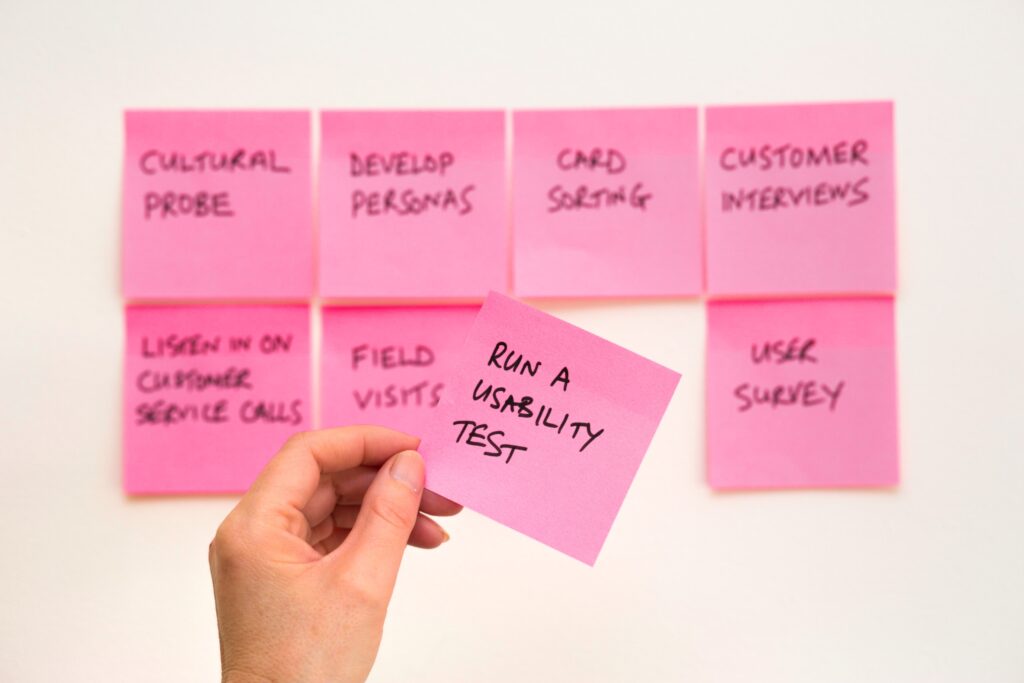How to Conduct User Research for Maximum Value
-
Bella Williams
- 10 min read

User research is the process of understanding users’ needs, behaviors, and attitudes through different techniques. Conducting user research is crucial for product teams to build better products and services that meet their users’ needs and solve their problems.
Whether you are launching a brand new product or redesigning an existing one, it is essential to engage with real users before you do anything else. If you skip this crucial step and dive straight into design and production, you are essentially basing your decisions on guesswork – a costly game to play.
What if you bring your product to market only to find that you guessed wrong? You will have to go back to the drawing board, having unnecessarily wasted time, resources and money. User research conducted in the right way, at the right moment, is the only way to avoid this.
Good design starts with thorough user research. Without sufficient research, it is impossible to distinguish between a product that merely looks good and one that solves a real user problem.

User Research
What is User Research?
User research is the process of understanding users’ pain points, desires and behaviors through various methods and techniques, including interviews, surveys, observations, usability tests, etc. It involves gathering insights from real users to inform the design and development of products or services.
The process of conducting user research can be tedious and time consuming. In this blog post, we will introduce some key user research methods and how to get maximum value from your user research.
Methods of Conducting User Research
There are two types of user research methods: qualitative and quantitative research.
Quantitative research yields measurable, numerical results, while qualitative research focuses on the reasons and motivations behind the user’s behavior.
Quantitative research methods include surveys, analytics, and A/B testing. Surveys are a cost-effective way to gather data from a large sample of users. Analytics provide data on user behavior, such as click-through rates and conversion rates. A/B testing is a method of comparing two versions of a design to determine which one performs better.
Qualitative research methods include interviews, focus groups, and usability testing. Interviews allow you to gather in-depth information about users’ attitudes, behaviors, and motivations. Focus groups are useful for testing new product concepts or ideas. Usability testing involves observing users interacting with a product to identify usability issues.
How to Conduct User Interviews
To extract maximum value from user research, it’s essential to follow a structured approach.
1.Define Your Research Goals
Before starting the research process, it’s essential to define your research goals. What do you want to achieve through user research? What problems are you trying to solve?
By defining your research goals, you can create a clear roadmap for the research process and ensure that you gather relevant data that helps you make informed decisions.
2. Identify Your Target Audience
Once you have defined your research goals, you need to identify your target audience. Who are the users that you want to research? What are their demographics, behaviors, and attitudes?
By identifying your target audience, you can tailor your research methods and questions to gather the most relevant data.
3. Choose the Right Research Methods
There are different research methods you can use to gather data, including interviews, surveys, observations, and usability tests. Choosing the right research methods depends on your research goals and your target audience.
For example, if you want to understand how users interact with your product, you can conduct usability tests to observe their behavior. If you want to gather insights into users’ attitudes and perceptions, you can use interviews or surveys.
4. Recruit Participants
Recruiting participants is a crucial step in the research process. You need to identify the right participants who match your target audience criteria. You can recruit participants through different methods, including online recruitment, social media, or in-person recruitment. It’s important to ensure that your participants are representative of your target audience and that you have enough participants to gather sufficient data.
5. Conduct the Research
Once you have recruited participants, it’s time to conduct the research. Make sure to follow a structured approach and ask open-ended questions that allow participants to express their thoughts and opinions freely. Use the research methods that you have chosen to gather data, and record the data in a structured way for analysis. You can read more about asking the right interview questions here.
6. Analyze the Data
Conducting the research is the first major step. After conducting the research, you need to analyze the data to extract meaningful insights. This is a painstaking process for UX researchers because of the number of hours spent sorting and trying to make sense of the data.
You can use different techniques to analyze the data, including content analysis, thematic analysis, or statistical analysis. It’s important to ensure that your analysis is unbiased and that you identify patterns and trends in the data that help you answer your research questions. AI powered tools like Insight7, automate the process and cut down research analysis time from hours to minutes.
7. Synthesize the Insights
The final step is to synthesize the insights from the research. By synthesizing the insights, you can create a comprehensive understanding of your users’ needs, behaviors, and attitudes. You can use the insights to inform your product or service development, marketing strategies, and customer service initiatives.
With Insight7, you can visualize themes, pain points, desires, behaviors and sentiments from your customer feedback in seconds, helping you gain a comprehensive understanding of the data.
It also synthesizes insights and identifies priorities and opportunities from your research data, which helps you make product decisions faster.
In conclusion, conducting user research is a critical step for businesses to create better products and services that meet their users’ needs. By following the steps outlined in this blog post, you can conduct user research for maximum value and make informed decisions that benefit your users and your business more efficiently.







